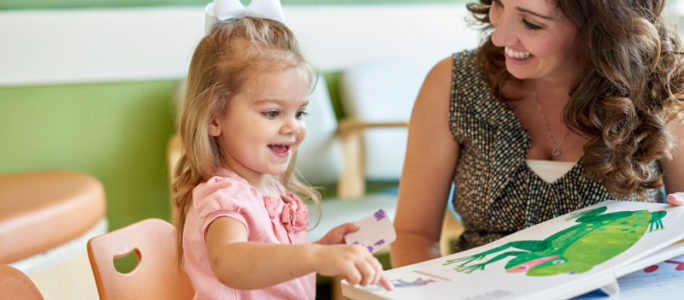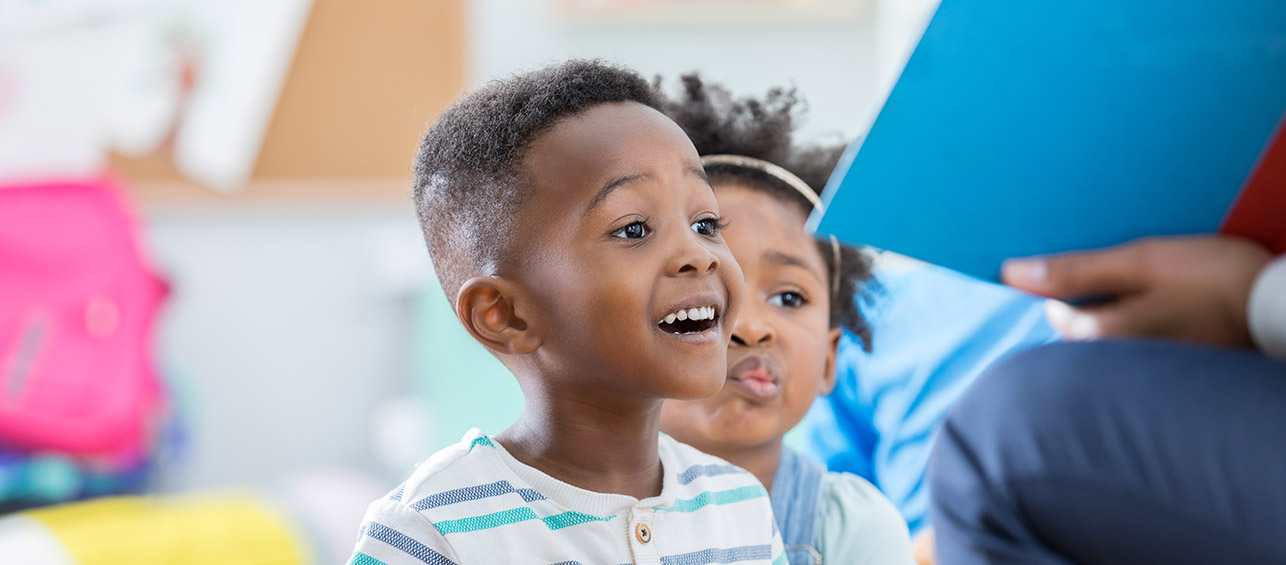Daily reading is key. I work every day to make sure that parents understand the key role that reading at home plays in their preschooler’s brain development and learning. But the biggest roadblock I see when I talk to parents about it in our Primary Care Center isn’t awareness of how important it is. It’s time.
It feels daunting. Parents and kids are busier than ever. And even though the recommended reading time is only 15-20 minutes a day, it may still feel like an unachievable goal.
You might be wondering why a pediatrician discusses reading with patients. To me, reading is just as important to a child’s health as being up to date on immunizations. It’s what every child needs to thrive. Reading exposure during the critical stage of development – between the ages of 0-5 – promotes early literacy skills and ultimately helps prepare kids for school. Here are some helpful hints for fitting reading with your child into your daily schedule.
Tips To Fit Reading In and Make It Count
- It all adds up. You don’t have to sit down in a chair with your child in your lap for 15-20 minutes straight each day. If you read to your child a couple of minutes here and there over the course of the day, it will add up to 15 minutes each day.
- Have fun. How you share the book is just as important as how often you read it. Snuggle up if you have the time. Read in loud, soft or silly voices.
- Make it age appropriate. Babies can benefit from reading just as much as older children. Here are tips on how to do read with babies, toddlers, preschoolers and kindergartners.
- Use the book as a tool for conversation. Sure, there’s benefit in just looking at a book and reading it. But there is exponential benefit when using a technique called dialogic reading. Ask questions about the book, in addition to reading it. We teach the “CAR” method:
- Comment on the picture. “Look, there’s a dog in the picture.” Then wait for the child to talk about it.
- Ask questions about the picture. “What color is the dog?” Then wait for a response.
- Respond by adding a little more on top of what your child says. “Yes, the brown dog is walking down the street.”
- “Reading” can happen anywhere. Weave it into your day. You don’t necessarily need a book to help your child with early literacy skills. If you’re at the grocery store, pick up a piece of produce and ask your child something about it. You can use the same “CAR” method without a book. Or while you’re in the car, ask your child what vehicle is next to you. Ask him where he thinks the person driving it is going.
- Bring books with you. We do a lot of waiting around each day. In the checkout line. At the doctor’s office. On the bus. Keep a couple of books with you at all times; that way you can seize those moments when you don’t have anything else to do. Giving a child a backpack with a couple of books in it can help encourage this.
- It doesn’t have to be the parent or main caregiver every time. Reading is beneficial to your child no matter who is doing it. And it still counts toward that 15-20 minute daily goal. Older brothers and sisters can read to their younger siblings. Grandparents and babysitters, too.
- Go to your library often. When children can pick out their own books, it gives them a sense of ownership and excitement. And take advantage of story time while you’re there. The library has many activities and resources to teach children the literacy skills they need to start kindergarten.
- Enroll your child to receive free books from the Ohio Governor’s Imagination Library. The Ohio Governor’s Imagination Library mails a new, free book each month to children from birth to age 5 who are enrolled in the program. It is free and available for any child who lives in Ohio.
Daily reading will improve your kids’ basic literacy skills and open their minds to learning. When parents help their children establish a love for books, they set them up for greater success in school and ultimately, life.
Editor’s note: Cincinnati Children’s is committed to encouraging early childhood literacy and improving kindergarten readiness by partnering with key literacy organizations including Reach Out and Read, Imagination Library and Read Aloud.






The above tips are so easy to do and are such a huge asset to a child’s life! They promote a strong base for their future education.